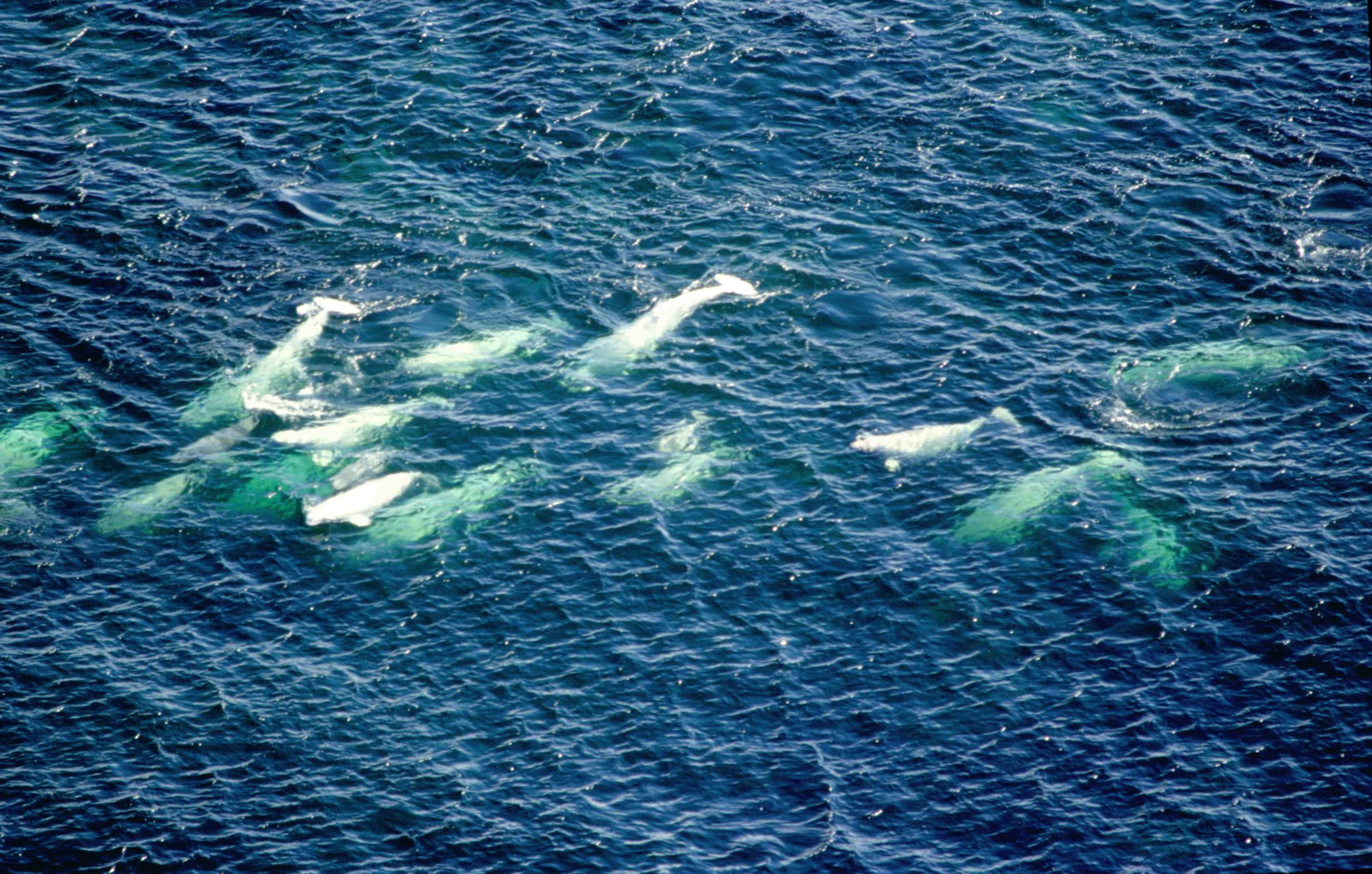Do Ungava Bay beluga exist?
“It’s a food security issue, but it’s also an educational and cultural issue.”

A major point of contention during the recent hearing on beluga management in Nunavik was whether or not a stock of Ungava Bay beluga even exists.
Its presence is the reason for a traditional beluga hunting area on Ungava Bay being closed off by the Department of Fisheries and Oceans. But hunters from Ungava Bay say the closure is without merit.
“You say you’re trying to protect the Ungava Bay beluga, but you can’t even tell me the Ungava Bay beluga exists,” said Billy Dan May, president of Tasiujaq’s Local Nunavimmi Umajulirijiit Katujiqatigininga, or LNUK.
“You tell me you can’t give me the data if you don’t have the samples, but we can’t get the samples if there is a total allowable take.”
From Jan. 21 to 23, hunters and community representatives from across Nunavik went before the Nunavik Marine Region Wildlife Board to weigh in on future management plans for the region’s beluga whales.
The current system is based around protecting the endangered eastern Hudson Bay Beluga, with hunting quotas — or total allowable takes — set to limit the catch of this whale. But other areas have been closed to beluga hunting entirely, mostly because of the eastern Hudson Bay whales.
The Mucalic Estuary, though, is closed because the DFO argues a small herd of Ungava Bay beluga use this as their core area.
No Ungava Bay beluga have been counted in aerial surveys here, but hunters have reported that belugas still visit the Mucalic area in the summer, “suggesting that the stock continues to persist albeit at very low levels,” according to the DFO’s written submission to the hearing.
“The population must be very small, if we did not detect any whales as we flew along the transect,” said Mike Hammill, section head of marine mammals for the Laurentian region with the DFO, on Jan. 21.
It’s estimated there are fewer than 100 beluga in this population, he said. Looking at historical data, even with no hunting of the stock, Hammill said the best-case scenario is that there are 300 Ungava beluga.
A sampling project began in summer 2019 to try to identify the stock, but it could take some time to build up enough samples to properly profile the stock.
“This data will allow [us] to assert or deny the existence of a specific beluga population living in the Ungava Bay and will serve as support for the management decisions,” said DFO’s statement.
In the meantime, they have recommended keeping the Mucalic area closed to harvesting under the next management plan.
But this is not the way hunters and community representatives around the table saw it.
“There are no Ungava beluga,” said James May, president of the Regional Nunavimmi Umajulirijiit Katujiqatigininga.
The beluga in Ungava Bay, May said, are of the Hudson Bay stocks and their arrival depends on ice conditions on Hudson Strait.
“When they are migrating through Quaqtaq, when they get stuck because of the ice, to continue, they turn back and go to Ungava Bay because there’s no routes for them and then there are lots in the bay,” said May.
Two years ago, he said they had many beluga because they couldn’t get through the strait, but this year there was little ice and few beluga in Ungava Bay. “According to my beliefs and knowledge, there is no Ungava Bay beluga,” May said.
It is an important issue because the Mucalic Estuary is the traditional hunting grounds of Kangiqsualujjuaq, Tasiujaq and Kuujjuaq. Closed off from this area, residents of these communities have to travel much longer distances to hunt.
For Kangiqsualujjuaq, on the southeastern shore of Ungava Bay, the closure means significant costs to cover the great distance to waters open for harvesting.
“When the hunters are going down to Quaqtaq and Kangiqsujuaq, it costs a lot of money,” said Tommy Etok, Kangiqsualujjuaq’s LNUK president. “Today, to get one beluga, it would cost $17,000.”
This limits not only access to that traditional food, but also their ability to bring youth out to teach them how to hunt.
James May said the DFO has been imposing regulations on Inuit here despite the lack of information on this stock. And the impacts of this have been wide-ranging.
“This has to be taken seriously before the culture is lost,” said May. “Yes, it’s a food security issue, but it’s also an educational and cultural issue.”
Hammill said they do plan to attempt another count of the Ungava beluga as part of the 2020 field season. “This summer we will try to fly Ungava, but the focus is eastern Hudson Bay and James Bay,” said Hammill.
This area needs to be a priority, Billy Dan May said.
“DFO are not completely sure if there was ever Ungava Bay herds because beluga were harvested so much in the past,” he said. He spoke about stories passed down from the historical commercial whale hunt in the late 19th and early 20th century.
He said after belugas were beached and still alive, the company men would go off and party. He said they killed the beluga by stabbing them in the throat.
Jimmy Johannes, president of Kuujjuaq’s hunting organization, said you can still find steel rings at sites around Ungava Bay, set there by the Hudson Bay Company to haul in hundreds of beluga.
Beluga are intelligent animals, Billy Dan May said, so of course they didn’t come back after this.
In his proposal to the marine wildlife board, Johannes proposed opening the Mucalic Estuary to hunters from his community, along with hunters from Kangiqsualujjuaq and Tasiujaq.
The Nunavik Marine Region Wildlife Board will gather all of the information from the hearing to submit a decision on beluga management for approval from Bernadette Jordan, minister of Fisheries and Oceans Canada. She will have 60 days to respond.